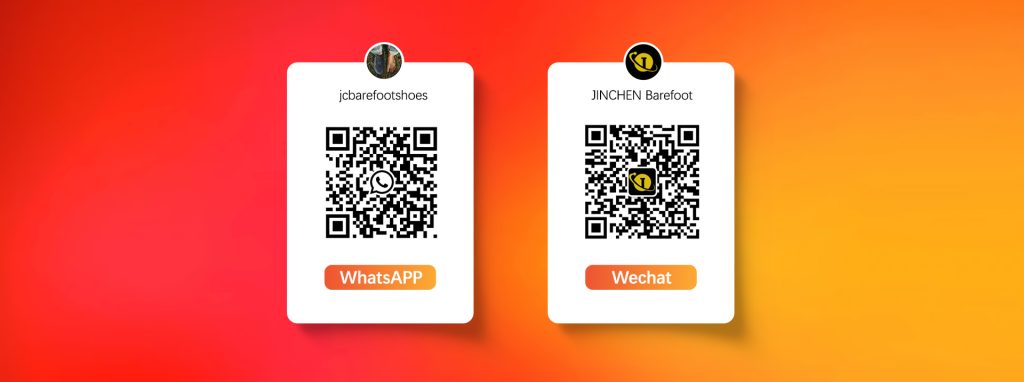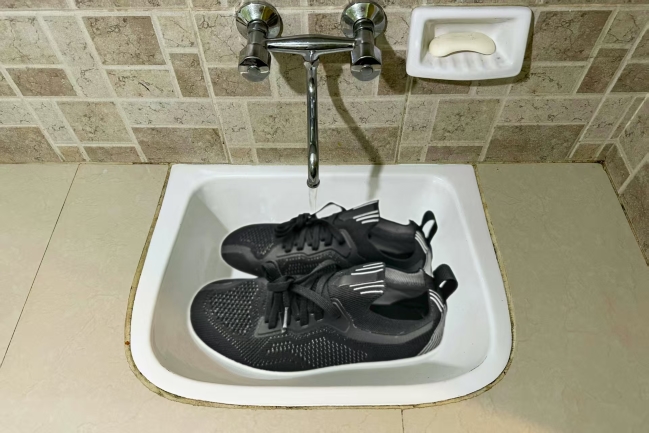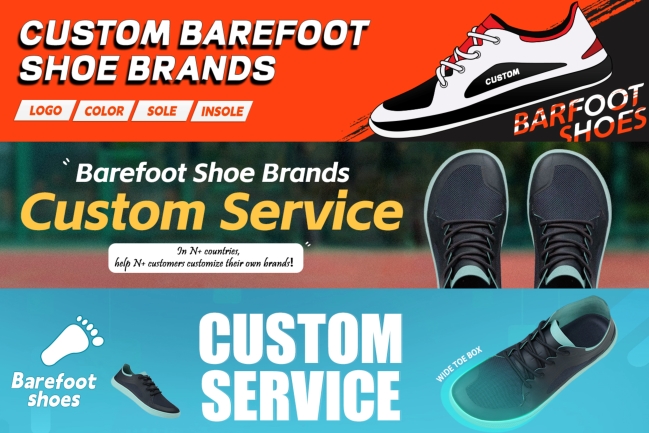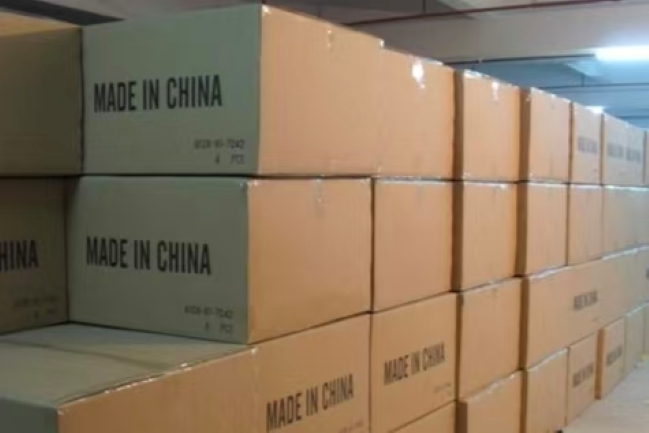Summer is the carnival season for barefoot shoe enthusiasts. Whether it’s morning jogging, city commuting, or going to the beach or camping, light and breathable barefoot shoes can bring unparalleled comfort.
But problems follow: in summer, feet sweat more, the ground is dusty and muddy, and barefoot shoes are thinner and lighter than ordinary shoes. Once they get dirty, cleaning them becomes a headache for many people.
So, are barefoot shoes really “not afraid of dirt or heat”? How exactly should shoes made of different materials be cleaned? How can we ensure that shoes are both clean and do not damage their functions? As a barefoot shoe manufacturer, we will combine material knowledge, scientific cleaning methods and maintenance experience to disassemble the most comprehensive summer barefoot shoe cleaning guide for everyone.
Why Do Barefoot Shoes Get Dirty More Easily in Summer?
Compared with ordinary sports shoes, barefoot shoes are thinner and closer to the ground. This design is very friendly to foot health, but it also means that they are more prone to contact with dust and sweat. The main reasons for barefoot shoes getting dirty in the hot summer environment are:
Increased foot sweat
In summer, the amount of sweat on the soles of the feet is 2 to 3 times that in winter. When the inside of shoes gets damp, it is easy for bacteria and odors to breed.
The outdoor environment is complex.
In summer, there are more outdoor activities and trips. Grass, sand, beaches and asphalt roads can all make your shoes dirty very quickly.
Material properties
The uppers of barefoot shoes are mostly made of breathable knitted fabric, microfiber leather or vegan leather, while the soles are mainly made of rubber, EVA or TPU. Although these materials are lightweight, the cleaning methods vary depending on the material.
The habit of not wearing socks
Many people wear barefoot shoes in summer and go barefoot directly. This way can better activate the perception of the feet, but the insoles and uppers come into direct contact with the skin, making it easier for foot sweat to remain and stains to accumulate.
Wrong Cleaning Methods That Damage Barefoot Shoes
Some assume barefoot shoes can be tossed into the washing machine like regular sneakers. But improper methods may ruin the shoes. Common mistakes include:
Machine washing and spin-drying: High-speed spinning can damage the glue bond between the sole and upper.
Direct sun exposure: Intense heat can cause color fading, stiffness, and sole aging.
Harsh detergents: Strong alkaline cleaners like bleach or washing powder damage fibers and coatings.
Long soaking: Extended water exposure swells the sole and worsens odor problems.
Barefoot shoes are not fragile, but they do need scientific care.
Cleaning Methods by Material Type
Knit fabric uppers (common in running and casual barefoot shoes)
How to clean:
Brush off loose dirt with a soft brush.
Use lukewarm water + mild detergent to gently scrub.
Wipe the sole with a damp cloth.
Air dry in a ventilated place (avoid sunlight).
Note: Do not soak for long periods to prevent deformation.
Microfiber leather / vegan leather uppers
How to clean:
Wipe with a damp cloth to remove surface dirt.
For stains, use a leather cleaner.
Apply leather conditioner after drying to maintain flexibility.
Note: Never soak in water or machine wash—risk of cracking.
Rubber soles
How to clean:
Use a damp cloth or brush with mild detergent.
For stubborn stains, use baking soda paste.
Note: Avoid strong acids or petroleum solvents.
EVA / TPU soles
How to clean:
Rinse with clean water and wipe with a sponge.
Use diluted vinegar solution to remove odor.
Note: Do not expose to direct heat or sunlight—may yellow or warp.
Removable insoles (antibacterial, wool felt, or Ortholite)
How to clean:
Fabric insoles: Hand wash with mild detergent, air dry flat.
Wool felt insoles: Gently brush only, avoid soaking.
Antibacterial insoles: Spray with diluted alcohol for quick disinfection.
Note: Always dry separately before placing back in shoes.
Cleaning Frequency and Care Levels
To keep barefoot shoes fresh, we recommend a tiered cleaning schedule:
Light daily care
After getting home, take out the insoles first and dry them in a well-ventilated place.
Quickly wipe the dust off the shoe surface with a damp cloth.
Sprinkle a small amount of baking soda powder inside the shoes to absorb the unpleasant smell.
Weekly cleaning
The insoles should be cleaned separately.
Hand wash the upper of the shoes and then dry them in the shade.
Thoroughly scrub the soles of the shoes to remove accumulated sand and mud.
Monthly deep cleaning
Use professional cleaners or enzyme effervescent tablets;
Thoroughly clean the upper, sole and insole of the shoes.
After it is completely dry, you can spray antibacterial spray inside the shoes to delay the growth of bacteria
Extra Protection & Maintenance Tips
In addition to cleaning, regular protection is also very important
Advance protection: Before wearing new shoes for the first time, you can spray a layer of anti-stain spray on the shoe surface to form a protective film.
Dry in time: In summer, when it rains or you wade through water, take out the insoles as soon as possible to dry them to avoid a musty smell.
Avoid direct sunlight: Dry in a well-ventilated area in the shade. If necessary, use an electric fan to accelerate the process.
Alternate wearing shoes: Prepare two pairs of barefoot shoes and use them alternately to extend their lifespan.
Exclusive storage: After traveling or outdoor activities, place it in a breathable shoe bag to avoid prolonged sealing.
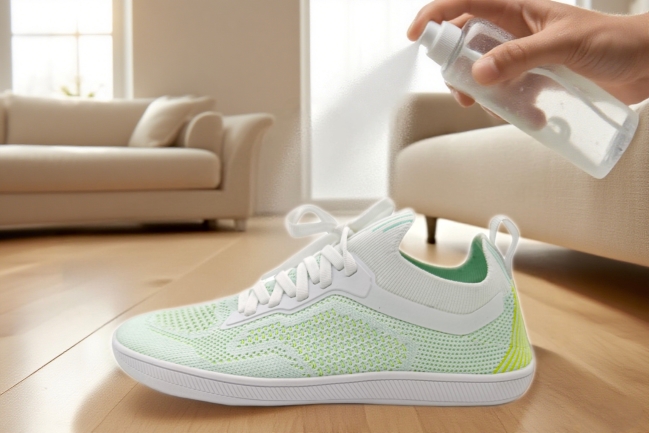
FAQs
Q1: Can barefoot shoes be machine washed?
A: Not recommended. Machine washing can damage the bonding areas and shorten the lifespan of the shoes.
Q2: What should I do if my shoes have a smell of foot sweat in summer?
A: It can be removed with a diluted solution of baking soda powder or white vinegar, or an antibacterial spray.
Q3: What should I do if my shoes are very dirty and have mud?
A: First, rinse off most of the dirt with clean water, then gently brush with a soft brush. Don’t scrub directly at the beginning.
Q4: Can wool felt insoles be washed?
A: Do not soak for a long time. Just brush gently and keep it dry and well-ventilated.
Q5: What should I do if my barefoot shoes turn yellow after being worn for a long time in summer?
A: You can scrub it with a cleaning solution made of baking soda and hydrogen peroxide, and then dry it in a cool place.
Conclusion
Wearing barefoot shoes in summer is liberating, but keeping them clean and fresh is just as important.
With the right cleaning methods, your shoes can stay odor-free, maintain their structure, and last longer.




By following these steps, your barefoot shoes will remain fresh, comfortable, and ready for every summer adventure.
If you’d like to learn more about barefoot shoe materials, cleaning solutions, or business cooperation, feel free to reach out:
📧 Email: barefoot@jinchenshoes.com
📱 Phone/WeChat: +86 199 3076 5088
🌍 Website: www.jinchenshoes.com
